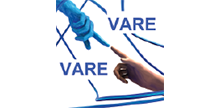The use of virtual reality training application to increase the effectiveness of workshops in the field of lean manufacturing
- a,b Poznan University of Technology, Faculty of Mechanical Engineering and Management, Chair of Management and
Production Engineering - c Sumy State University, Faculty of Technical Systems and Energy Efficient Technologies, Department of
Manufacturing Engineering, Machines and Tools - d Sumy State University, Faculty of Technical Systems and Energy Efficient Technologies, Department of General
Mechanics and Machine Dynamics
Cite as
P. Buń, J. Trojanowska, V. Ivanov, I. Pavlenko (2018). The use of virtual reality training application to increase the effectiveness of workshops in the field of lean manufacturing. Proceedings of the 4th International Conference of The Virtual And Augmented Reality In Education (VARE 2018), pp. 65-71. DOI: https://doi.org/10.46354/i3m.2018.vare.011
Abstract
The aim of the research is to check whether the use of VR will allow reducing the time needed to prepare students for workshop classes - simulation of the assembly process. The acquisition of manual skills or procedural knowledge about the manual assembly tasks is not the main goal of the workshop classes, but it is
required to efficiently perform the classes. The traditional approach of teaching students how to assemble products during workshops was not time effective. In order to improve the quality of classes, the authors decided to use new, low-cost VR devices that were recently developed, in a training application, which can be used by students before classes. Initial research carried out among students of the Poznan University of Technology indicate that the use of the VR application for operator training will shorten the time to prepare students for simulation by about 75%, which will positively affect the efficiency of the workshop classes. It should also be emphasized that students who prepare for classes using the VR application are trained to work at all assembly positions, which eliminates organizational problems that arise when changing roles during subsequent rounds of simulation.
References
- Araújo A.F., Varela M.L.R., Gomes M.S., Barreto R.C.C., Trojanowska J., 2018, Development of an
intelligent and automated system for lean industrial production adding maximum productivity and efficiency in the production process; In: Hamrol A., Ciszak O., Legutko S., Jurczyk M. (eds) Advances in Manufacturing.
Lecture Notes in Mechanical Engineering. Springer, Cham, pp.131-140 - Berg L.P., and Vance J.M., 2017, Industry use of virtual reality in product design and manufac-turing: a
survey. Virtual reality, 21(1), 1-17 - Bowman D. A., Larry F. H., 1997, An evaluation of techniques for grabbing and manipulating remote objects in immersive virtual environments., Proceedings of the 1997 symposium on Interactive 3D graphics. ACM
- Brooks F.P., 1999, What's real about virtual reality?. IEEE Computer graphics and applications, 19.6:
16-27 - Buń P., et al., 2015, Educational Simulation of Medical Ultrasound Examination, Procedia Computer Science 75, 186-194
- Buń P. et al., 2017, Possibilities and Determinants of Using Low-Cost Devices in Virtual Educa-tion Applications. Eurasia Journal of Mathematics, Science & Technology Education, 13(2), 381–394
- Buń P., Górski F., Lisek N., 2018, Comparison of Manual Assembly Training Possibilities in Various Virtual Reality Systems. In: International Conference on Innovation, Engineering and Entrepreneurship. Springer, Cham, p. 398-404
- Caputo F.M., Giachetti A., 2015, Evaluation of basic object manipulation modes for low-cost immersive Virtual Reality. In: Proceedings of the 11th Biannual Conference on Italian SIGCHI Chapter. ACM, p. 74-77
- Dann S., 2017, The beginning of VR 2.0 and much more, European VR Congress 2017
- Foley D., V. Wallace V., Chan V., 1984, The human factors of computer graphics interaction techniques, IEEE Computer Graphics & Applications, (4), pp. 13-48
- Gick M.L., Holyoak K.J., 1987, The cognitive basis of knowledge transfer, Transfer of Learning: Contemporary Research and Applications, pp. 9– 46
- Górski F. et al., 2017, Effective Design of Educational Virtual Reality Applications for Medicine using Knowledge-Engineering Techniques. Eurasia Journal of Mathematics, Science & Technology Education 13(2), 395–416
- Hamblin C.J., 2005, Transfer of training from virtual reality environments. Thesis (PhD). Wichita State University
- Liker J. K., 1997, Becoming lean: Inside stories of U. S. manufacturers. Portland: OR: Productivity Press
- Lopes J.J., Varela M.L.R., Trojanowska J., Machado J., 2018, Production Flow Improvement in a Textile Industry. In: Rocha Á., Guarda T. (eds) Proceedings of the International Conference on Information Technology & Systems (ICITS 2018), Advances in Intelligent Systems and Computing, Springer, Vol.721, pp.224-233
- Mine M.R. et al., 1997, Moving objects in space: exploiting proprioception in virtual-environment interaction. Proceedings of the 24th annual conference on Computer graphics and interactive techniques. pp. 19-26.
- Pavlenko I., Trojanowska J., Ivanov V., and Liaposhchenko O., 2019a, Scientific and methodological approach for the identification of mathematical models of mechanical systems by using artificial neural networks. HELIX 2018,
Lecture Notes in Electrical Engineering, Vol. 505, pp. 299–306, DOI: 10.1007/978-3-319-91334-6_41. - Pavlenko I., Simonovskiy V., Ivanov V. et al., 2019b, Application of Artificial Neural Network for Identification of Bearing Stiffness Characteristics in Rotor Dynamics Analysis. In: Ivanov V. et al. (eds) Advances in Design, Simulation and Manufacturing. DSMIE 2018. Lecture Notes in Mechanical Engineering. Springer, Cham, pp. 325–335, doi: 10.1007/978-3-319-93587-4_34.
- Womack J. P. and Jones D. T., 1996, Lean Thinking: Banish Waste and Create Wealth in Your Corporation. New York: Simon & Schuster
- Womack J. P., Jones D. T. and Roos D., 1990, The Machine That Changed The World: The Story of Lean Production. New York: Rawson Associates
